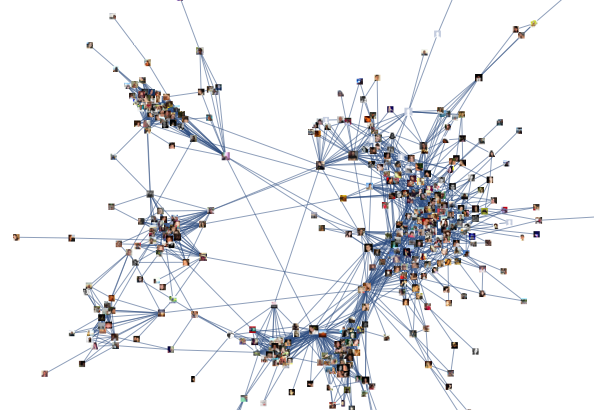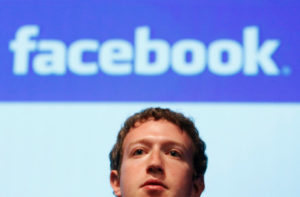
Qualche giorno fa, il presidente e fondatore di Facebook, Mark Zuckerberg, ha pubblicato sulla sua pagina Facebook una lettera che contiene alcune affermazioni programmatiche molto interessanti sul futuro della piattaforma, quali le priorità e la visione di insieme che sottenderà i prossimi sviluppi della programmazione. Si tratta di un documento molto rilevante, nella misura in cui si inserisce nel dibattito più generale sulle grandi aziende statunitensi che gestiscono i più grandi servizi online e i processi politici che li vedono coinvolti. Pensiamo per esempio ad alcune delle accuse più ricorrenti rivolte al gigantesco social network dai politologi americani e non solo, cioè che il medium crea delle ‘filter bubbles’ esponendoci solo a opinioni simili alle nostre (quella che Zuckerberg definisce ‘riduzione della diversità informativa’ e quindi il rischio della polarizzazione) e che non permette di distinguere le notizie vere dalle false (le famose bufale), definite dal miliardario americano come il rischio del ‘sensazionalismo’. Di fronte a questi rischi ed ‘errori’, come vengono definite, Facebook promette maggiori investimenti nelle sue tecnologie di intelligenza artificiale (A.I.), prefigurando algoritmi in grado non solo di distinguere il vero dal falso, ma di gestire il feed degli utenti in modo tale da evitare sia la ‘bolla del filtro’ che la polarizzazione delle opinioni, selezionando una varietà di punti di vista da cui costruire una opinione più equilibrata. Facebook si pone dunque esplicitamente nella inedita posizione di governatore dell’informazione sociale, e quindi come nuova infrastruttura della società (post)civile globale.
Rispetto ai giorni in cui l’azienda rifiutava fermamente, seguendo l’esempio di Google, l’idea di essere una media company, definendosi in primo luogo come una azienda a vocazione tecnologica, si tratta di un importante mutamento già annunciato qualche mese fa. In questo modo, la piattaforma comincia a collocarsi esplicitamente nel dominio dei media, quindi paragonandosi a media come la televisione e la stampa, e come conseguenza accollandosi anche le responsabilità politiche della governance. Se, da un altro punto di vista, grandi aziende della Silicon Valley hanno stabilito la governance attraverso piattaforme informatiche (Internet delle cose, smart city and smart government, sharing economy, gig economy etc) come loro campo di azione, Facebook è l’unica che sposta l’asticella di questo intervento dalla regolazione algoritmica dei flussi logistici, alla regolazione diretta di quello che il documento definisce il ‘tessuto sociale’, cioè alla modulazione dei processi associativi e e dei ‘valori collettivi’ che da essi emergono.
Abbiamo visto nei giorni della vittoria di Trump, una presa di posizione politica da parte dei giganti della Silicon Valley, che, con l’eccezione di Uber (che infatti ha subito un boicottaggio con l’hashtag #DeleteUber), si sono schierate generalmente con l’opposizione, diventando i portabandiera della tradizione liberale americana e dei suoi valori (esemplificati dalla citazione di Lincoln con cui la lunga lettera di Zuckergberg non a caso si chiude), ma anche della globalizzazione contro la minaccia ultranazionalista del populismo di Trump. Se il motto che sintetizza la missione di Facebook, è “rendere il mondo più aperto e connesso”, questo si sposa male con la chiusura nazionalista di eventi come la Brexit e l’elezione dell’imprenditore americano. La lettera presenta Facebook come il governatore di un tessuto sociale globale connesso che si individualizza in ambienti e regioni specifiche (dalla Germania all’India, dall’Egitto al Nepal) che producono ‘norme culturali’ eterogenee, non governabili a partire da una unica norma. La curva della normazione , che Foucault descriveva relativamente ai meccanismi di sicurezza, variabile e differenziata, sostituisce la ‘normalità’, mentre l’apertura e la connessione realizzano la continuità del processo di valorizzazione.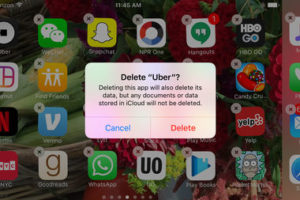
Se come notavano autori diversi quali Celia Lury e Maurizio Lazzarato qualche anno fa, l’azienda postfordista non produce in primo luogo merci, ma mondi in cui vivere, ecco che Zuckerberg presenta la missione della sua azienda, il suo ‘viaggio’ come ‘creazione di un mondo’ naturalmente ‘aperto e connesso’ che porti avanti ol processo espansivo di socializzazione che porta l’umanità, nelle parole della lettera, ‘dalle tribù, alle città, alla nazione’, verso una dimensione inevitabilmente globale. E’ una nuova immagine del vecchio eurocentrico concetto di progresso, che nella visione di Zuckerberg conduce verso un sempre maggiore processo di socializzazione planetaria. Facebook si presenta dunque, come tutta la Silicon Valley, come rappresentante di una forza di globalizzazione che implicitamente oppone la chiusura nazionalista della Brexit e di Trump. La missione di Facebook diventa quindi quella di facilitare ed espandere il processo di globalizzazione nella misura in cui quest’ultimo presenta delle ‘sfide’, dei ‘rischi’ e delle ‘opportunità’ che possono essere colte soltanto da quella che la lettera descrive come una ‘comunità globale’.
La lettera dunque rende esplicite quelle che sono le sfide della costruzione di nuove ‘infrastrutture sociali’ che permettano alla comunità globale di organizzarsi e rafforzare quel ‘tessuto sociale’ compromesso dalla globalizzazione stessa. E’ interessante notare come questa spinta a costruire una comunità globale si dia nel contesto dei problemi di governance incontrati dai gestori della piattaforma e che questa nuova visione sia centrata attorno ai ‘gruppi’. Zuckerberg dunque sposta il focus dalle reti sociali interpersonali (quali quelle accumulate da un profilo personale) alle ‘pagine’ (che costituiscono il motore dello sfruttamento economico della piattaforma con i loro ‘mi piace’) ai ‘gruppi’ come focus degli investimenti futuri, ponendosi paradossalmente come l’inventore della sociometria, lo psichiatra Jacob Moreno , il problema della regolazione psicosociale della vita delle popolazioni.
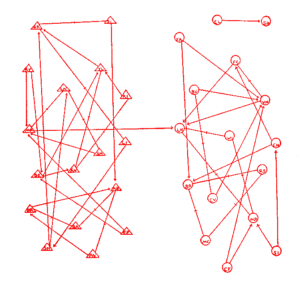
E’ sulla questione dei gruppi che emerge la visione e il modello di società che Facebook propone come soluzione alla crisi di governance globale (ma significativamente non alla crisi economica).
Sono convinta che non è un caso che la questione dell’infrastruttura sociale, come la chiama Zuckerberg, sia emersa attorno alla popolarità dei ‘gruppi’ sulla piattaforma, identificati come area per cui costruire nuovi servizi. In particolare Zuckerbeg si riferisce a quelli che vengono definiti ‘gruppi molto significativi’, cioè gruppi che diventano velocemente luoghi di sostegno e di cura per individui isolati da una condizione specifica (una rara malattia, per esempio, o anche gli sposi e le spose dei militari costrette a spostarsi di città in città senza poter costruire una vera rete sociale). A differenza delle reti interpersonali (amici, famiglia e conoscenti), i gruppi non solo resuscitano la vecchia immagine della ‘virtual community’ centrata sulla cura di cui parlava Howard Rheingold nei primi anni novanta, ma la integrano in un ‘tessuto sociale globale’, che è identificato con la piattaforma nel suo insieme. Le comunità di Facebook o gruppi performano tutte le funzioni che ancora oggi altri servizi online permettono (pensiamo alla piattaforma Slack o ai forum anonimi per vittime di violenze), ma le performano all’interno di un unico network privato con una architettura centralizzata server/client (o cloud) che ospita una popolazione di miliardi di utenti modellata attraverso il diagramma del grafo sociale e i metodi della social network analysis. Il sociale per Zuckerberg non è, come sostengono molti critici dei social, un sociale fatto di individui isolati e connessi (insieme ma soli come diceva Sherry Turkle), ma un social composto da gruppi e sotto-gruppi. nella misura in cui è il gruppo, non la comunità il referente tecnosociale che sottende la piattaforma e nella misura in cui lo’individuo non esiste se non come membro di un gruppo, per quanto piccolo esso sia. La società evocata da Zuckerberg con il nome di comunità e un insieme di sotto-insiemi connessi, cioè insieme topologicamente discontinui e continui che restituisce l’immagine di un globo eterogeneo ma connesso. Evocando implicitamente i primi studi della social network analysis, Zuckerberg descrive la società come un granuloso tessuto di piccole reti, che uniscono e differenziano, ma che compongono anche dopotutto un singolo plateau. E’ questa specifica composizione che permette, per Zuckerberg, alla rete sociale di diventare l’infrastruttura attraverso cui rispondere alle crisi globali, identificate significativamente e principalmente con il terrorismo e il cambiamento climatico.

Qualche anno fa, l’antropologa e attivista americana del movimento Occupy, Joan Donovan mi ha raccontato come è stato il movimento Occupy ad avere utilizzato per primo in maniera significativa e orientata politicamente la capacità logistica delle reti sociali, cioè la loro capacità di trasformarsi da reti di opinione a reti capaci di coordinare azioni su larga scala. Quando l’uragano Sandy si abbattè su New York, il movimento Occupy si dimostrò capace di mobilitare un processo di raccolta e movimento di risorse che dimostrò una capacità di ‘autogoverno dell’emergenza’ che i governi locali e nazionali stremati dai tagli non riescono quasi più a dare. La maggior parte degli usi innovativi della piattaforma raccontati dalla lettera vengono dagli utenti, dall’intelligenza di quella general sociality catturata da questi nuovi media. Nel suo lavoro più recente, Donovan ha iniziato a definire ‘ipercomune’ (o hypercommon) la capacità di cooperazione sociale resa possibile dalle reti, che rendere possibile nuove forme di autogoverno e modelli di produzione, che si differenziano sia dal modello statale che da quello aziendale.

Significativamente, Zuckerberg non inserisce tra le priorità politiche per la nuova comunità globale, la crisi del debito, la precarietà, lo sfruttamento o la tragedia delle migrazioni, ma si ferma alle pandemie, al terrorismo, e al cambiamento climatico. La piattaforma diventa il modo attraverso cui la società si difende dai danni e li previene. Il cambiamento sociale sta tutto nella capacità di individui (la ‘nonna’ che avrebbe iniziato il movimento della marcia delle donne contro Trump è l’esempio più significativo) di viralizzare la rete sociale come infrastruttura della mobilitazione. Se la piattaforma sta proponendo una alternativa al protezionismo ipernazionalista di May o Trump o delle nuove destre, lo fa rimanendo comunque fermamente all’interno di quello che Nick Srnicek ha definito il ‘capitalismo delle piattaforme’ – oggetto dell’importante incontro organizzato da Euronomade e Macao a Milano degli inizi di marzo.
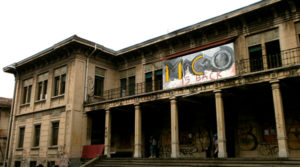
In sintesi, il documento di Zuckerberg rende ancora più chiaro come Silicon Valley stia formulando quella che Foucault descriverebbe come una nuova ‘razionalità politica’, che assume l’eredità del liberalismo e nel neoliberalismo nell’identificare il problema principale il governo delle ‘popolazioni’ (i milardi di utenti), la massimizzazione della loro vita sociale, politica e culturale, e la protezione dai ‘rischi’ e ‘errori’ della circolazione dell’informazione (dalle notizie false, sensazionalismo, polarizzazione, divisioni al terrorismo, il cambiamento climatico e le pandemie) all’interno di una economia di mercato globale che non mette però mai in discussione i rapporti di proprietà o l’accumulazione di valore economico. Insieme al movimento della Silicon Valley per la smart city (aspramente criticato tra gli altri per esempio da Evgeny Morozov ), il capitalismo delle piattaforme intensifica la sua vocazione a farsi governo della società. Quali forme di tecnopolitica e non solo possono rispondere a questa nuova configurazione?
